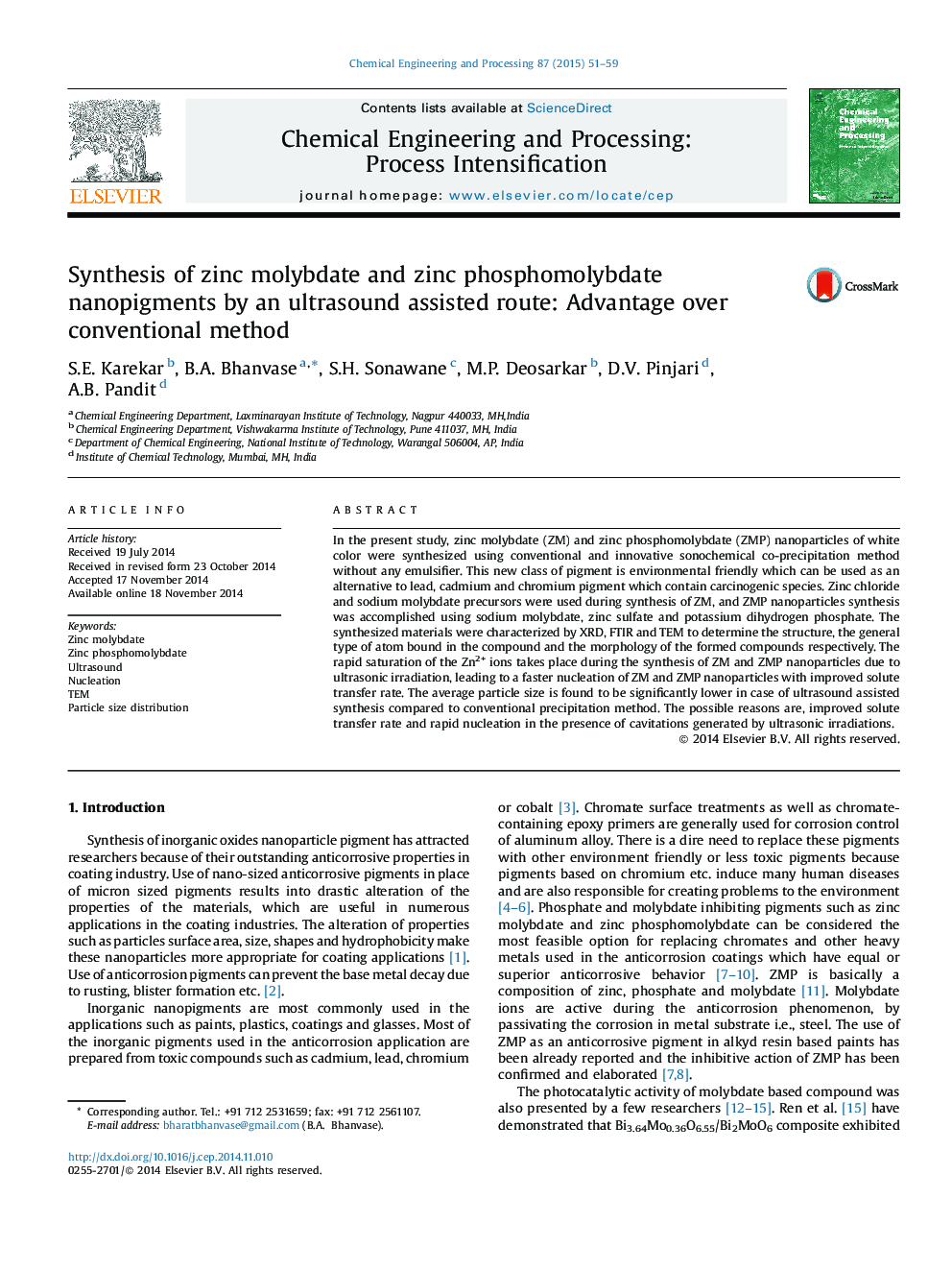| کد مقاله | کد نشریه | سال انتشار | مقاله انگلیسی | نسخه تمام متن |
|---|---|---|---|---|
| 686874 | 1460090 | 2015 | 9 صفحه PDF | دانلود رایگان |
• Synthesis of ZM and ZMP anticorrosion nano pigment by ultrasound is carried out.
• Effect of cavitation parameters onto morphologies of nanoparicles is reported.
• Ultrasound has significant effect on the particle size.
• Ultrasound is energy saving method for preparation of ZM and ZMP nanoparticles.
In the present study, zinc molybdate (ZM) and zinc phosphomolybdate (ZMP) nanoparticles of white color were synthesized using conventional and innovative sonochemical co-precipitation method without any emulsifier. This new class of pigment is environmental friendly which can be used as an alternative to lead, cadmium and chromium pigment which contain carcinogenic species. Zinc chloride and sodium molybdate precursors were used during synthesis of ZM, and ZMP nanoparticles synthesis was accomplished using sodium molybdate, zinc sulfate and potassium dihydrogen phosphate. The synthesized materials were characterized by XRD, FTIR and TEM to determine the structure, the general type of atom bound in the compound and the morphology of the formed compounds respectively. The rapid saturation of the Zn2+ ions takes place during the synthesis of ZM and ZMP nanoparticles due to ultrasonic irradiation, leading to a faster nucleation of ZM and ZMP nanoparticles with improved solute transfer rate. The average particle size is found to be significantly lower in case of ultrasound assisted synthesis compared to conventional precipitation method. The possible reasons are, improved solute transfer rate and rapid nucleation in the presence of cavitations generated by ultrasonic irradiations.
Journal: Chemical Engineering and Processing: Process Intensification - Volume 87, January 2015, Pages 51–59
